Hardwood Vs Softwood – Differences, Uses, Pros And Cons
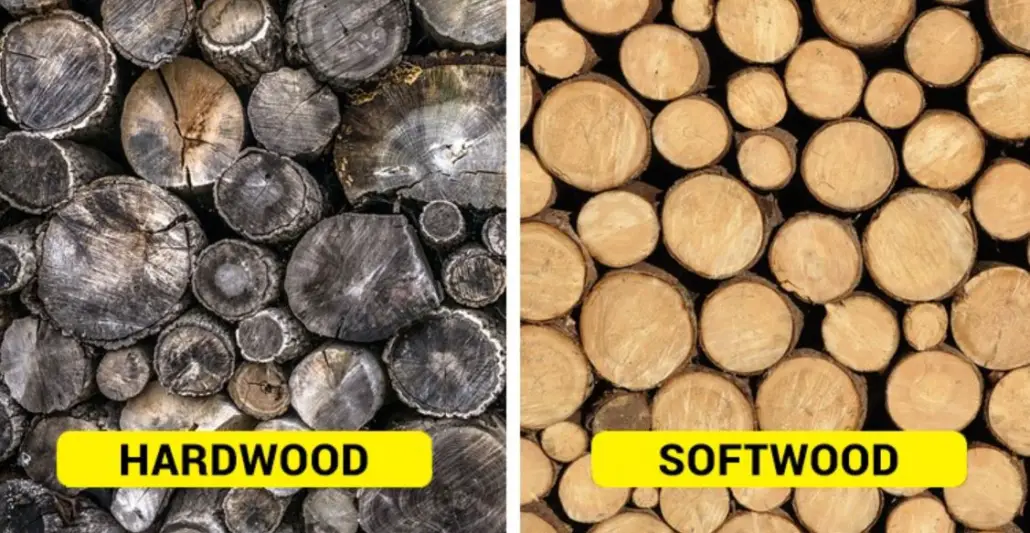
You may be predisposed to thinking that the differences between hardwood and softwood are that one is hard, and the other one is soft. But it’s actually a little more intricate than that. The terms ‘hardwood’ and ‘softwood’ speak to the structure of the wood—as well as the respective density of each one.
Using the correct type of wood for a specific purpose will go a long way in getting the most out of your wood, whatever you intend using it for.
In this article we will distinguish between hardwood and softwood in terms of their general uses, their pros & cons regarding those uses, and their overall inherent differences.
What Exactly is Hardwood?
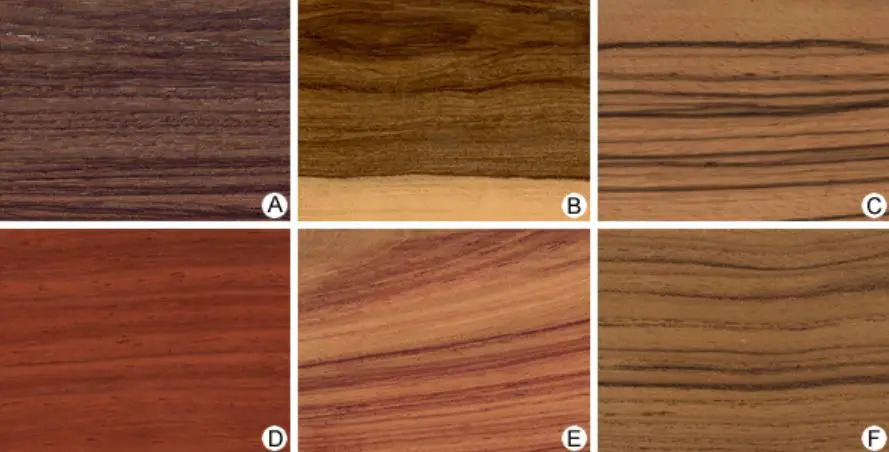
Hardwood is any wood that is harvested from trees that fall under the dicot tree category. These trees have distinguishable leaves, seeds and trunks.
Hardwood trees generally take a longer time to grow before they can be usefully harvested for wood. The wood itself is also denser, meaning it takes a longer time to dry out the wood after it has been harvested.
Examples of Hardwood Trees
You may be familiar with some of the trees that are typically used for hardwood harvesting.
That’s because these are often used for construction, and can be identified by name especially in the hardwood flooring industry.
Meranti
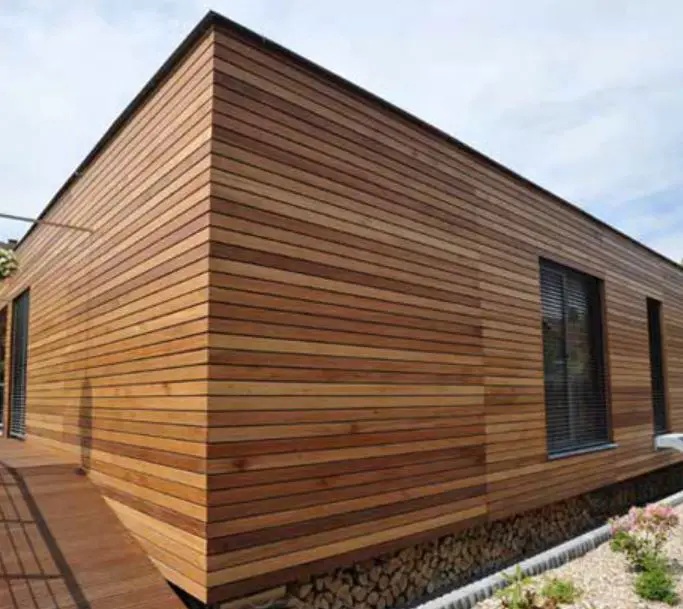
Meranti is often classified as a subspecies of Philippine Mahogany, and the term ‘mahogany’ is often used to describe a general class of wood under which Meranti falls.
This is one of the most common hardwoods found across the globe, and is most commonly grown and harvested in the Southwest Pacific and Southeast Asia’s rainforests.
Although meranti is a hardwood, it is one of the softer varieties of hardwood, making it ideal for cutting & reshaping.
Oak

Oak is probably one of the best known and recognized hardwoods found across the world.
Oak trees are massive, providing loads of wood for the harvester. But it can take many years for an oak tree to reach the maturity necessary for profitable harvesting.
The wood from oak trees is very heavy, making it durable and hardwearing—the perfect wood for construction and fencing!
Iroko
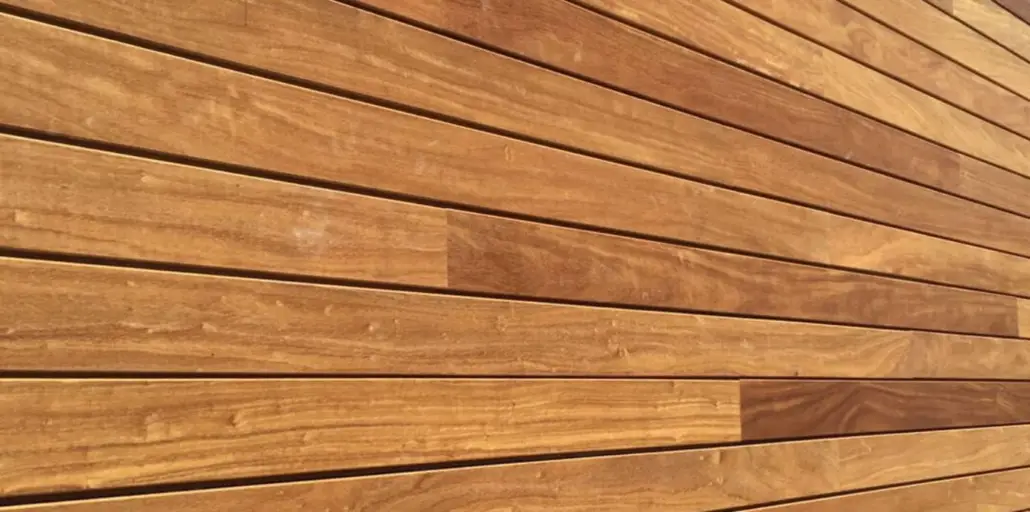
Iroko wood looks rather similar to teak, but it is a cheaper alternative.
It’s used mainly for paneling as well as cabinet making, due to its durability and aesthetically pleasing honey-brown color.
This light color darkens slightly over time, making it a keen favorite for antique-type furniture.
Sapele
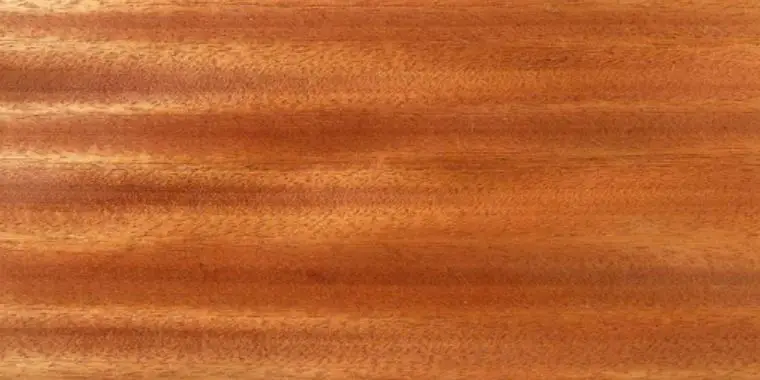
Sapele is a burgundy colored wood after it has been worked post harvesting.
I like sapele wood because of the fine lines in the grain—an occasional mottle appearing less often than other woods.
It’s one of the heavier hardwoods, and is extremely durable and weather resistant.
Teak
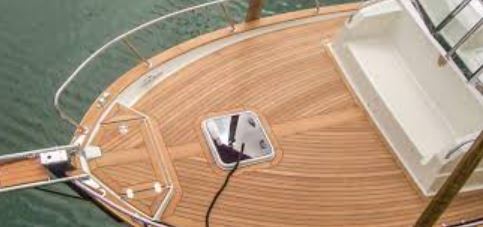
Teak is the more expensive cousin of iroko wood.
You will notice that many antique vanities, tables and chairs have been hand carved from teak wood.
It has a pleasant looking wood grain and darkens when varnished—further darkening over time.
A nice characteristic of teak wood is that it is inherently water resistant, one of the many reasons it is one of the more expensive woods out there.
Hardwood Vs Softwood Comparison
Hardwood |
Softwood |
|
General Characteristics |
|
|
Pros |
|
|
Cons |
|
|
Uses |
|
|
Common Uses Of Hardwood
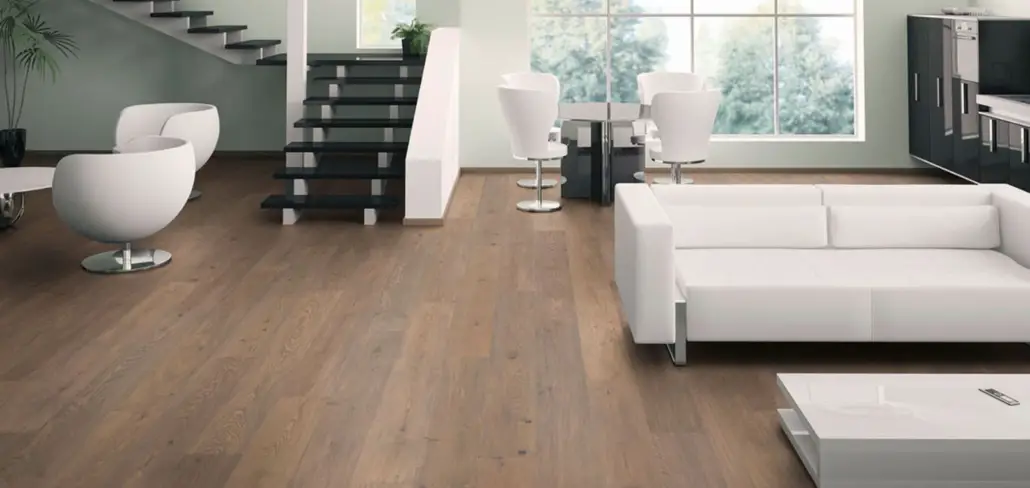
Because of its durability, hardwood has multiple uses—especially in construction and furniture making.
Let’s look at some of the most common uses for hardwood.
Paneling & Cladding
Wood paneling & cladding on walls is wildly popular. Who wouldn’t want a wooden finish on their home walls?
The reason hardwood is used for paneling and cladding is because of how robust it is.
Varnishing isn’t necessary too often because hardwoods are relatively self-preserving.
Fencing
Fences need to be strong to keep animals in and intruders out!
For this reason, hardwood is an ideal choice because it is naturally durable as well as weather resistant.
High End Furniture
As mentioned before, antique furniture (as well as furniture that’s been designed to look like an antique) is heavy and durable. Hardwoods like teak are a great material for this end.
Cabin Building
Hardwood is used for building cabins. This again is for the obvious reason that it’s hard, long lasting and weather resistant.
When hardwood gets wet, it doesn’t swell up and perish like some softwoods do.
Flooring
The most common place you will find hardwood is in the wood flooring industry.
Hardwoods are cut into plate-like sections and assembled for a natural wooden floor in high end homes.
The Pros and Cons of Hardwood Over Softwood
So which is better, hardwood or softwood? Well, it depends on what you want it for. Let’s look at the pros and cons of each.
Pros

Hardwood Is Weather Resistant
We only use hardwood for construction purposes because it can handle the elements.
Because of its dense make up, hardwood is perfect for construction, flooring and fence installations.
Hardwood Is Durable
The durability of hardwood puts it right up there for me.
When choosing a door or furniture, I’d go with hardwood every time because it has less chance of breaking or suffering damage.
Hardwood Requires Less Preserving
Another good reason to love hardwood is due to its self-preserving nature.
Having hardwood means you’ll save on wood preserver and varnish.
Cons
Hardwood Is More Expensive
Because hardwood trees take longer to grow and mature, it is a more expensive wood.
Another reason hardwood is more expensive is because the wood itself takes longer to dry after it’s been harvested.
Hardwood Is Heavy and Often Difficult to Manage
One aspect of hardwood that some might find negative is how heavy it is.
If I was building a cabin in the woods, I’d need plenty of assistance to carry all that heavy wood around!
Hardwood Is Less Flexible
Hardwoods aren’t generally used for molding purposes.
It’s not easily shaped unless it is hand carved, making it a durable but less flexible wood type.
What Exactly Is Softwood?
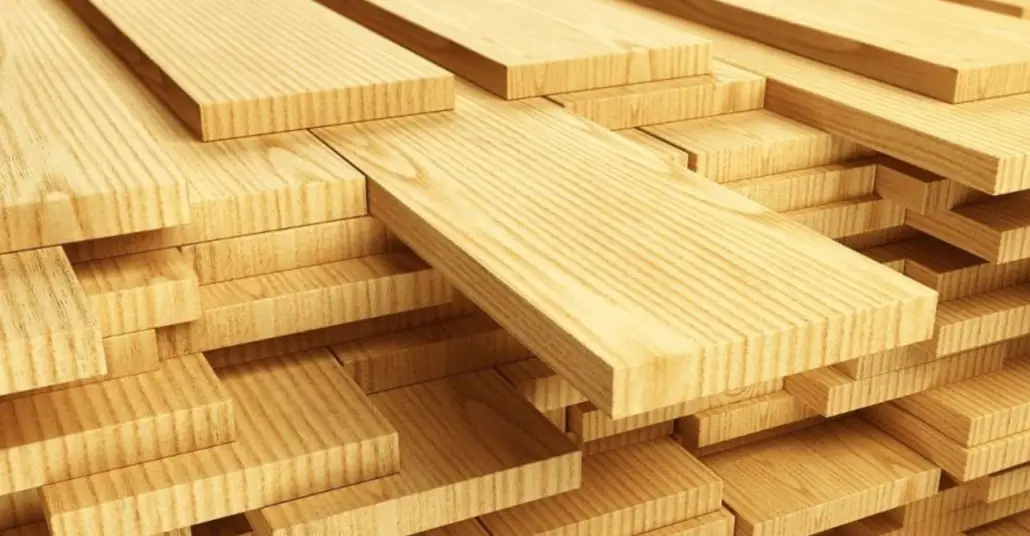
Now let’s turn to softwood. Softwood is often harvested from trees that grow faster, and fall under the gymnosperm tree variety. These trees grow at a rapid rate, making tree farming easier.
The wood from these trees is less dense, making it a more moldable wood that’s easy to shape and process. It’s also much lighter, and can be repurposed for a multitude of uses.
Examples Of Softwood Trees
You will have seen many softwood trees in passing. Let’s help you to identify these next time.
Fir
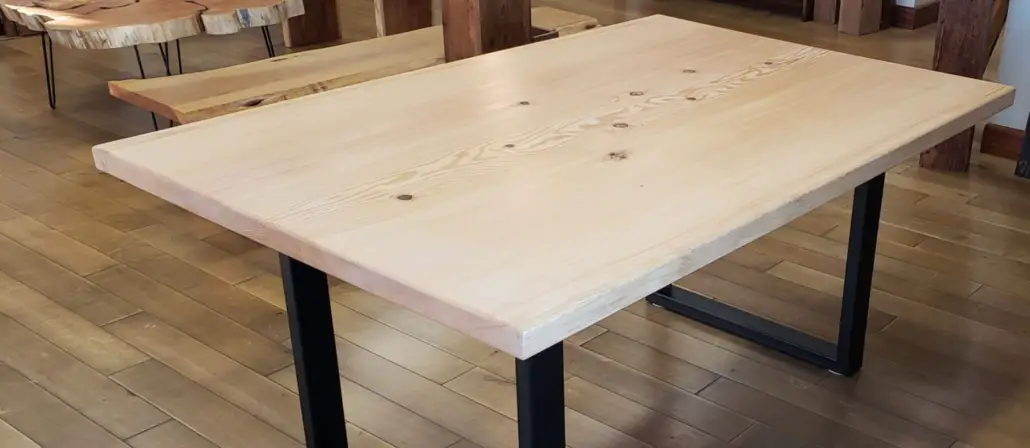
Ever wondered why your Christmas tree is so easy to carry? It’s because fir trees are of the softwood variety.
But more than simply being used to decorate your home during the holidays, these trees also play an important role in the production of stringed instruments, building beams and boat manufacturing.
Pine
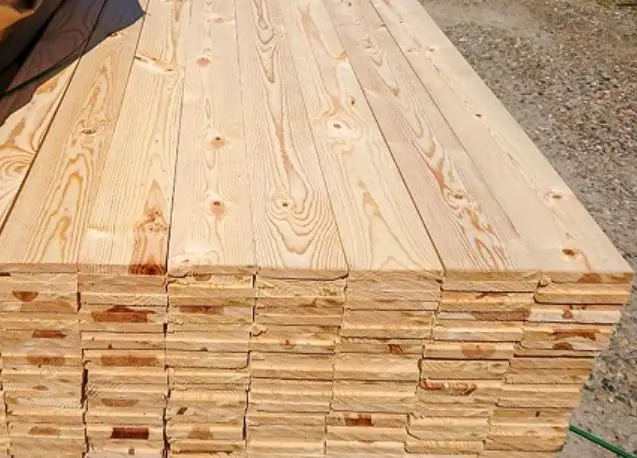
One of the most commonly farmed trees in the world, pine trees are responsible for—you guessed it—pine!
The list is endless for what this wood is used for: matches, wood crates, beams, and loads more.
Redwood
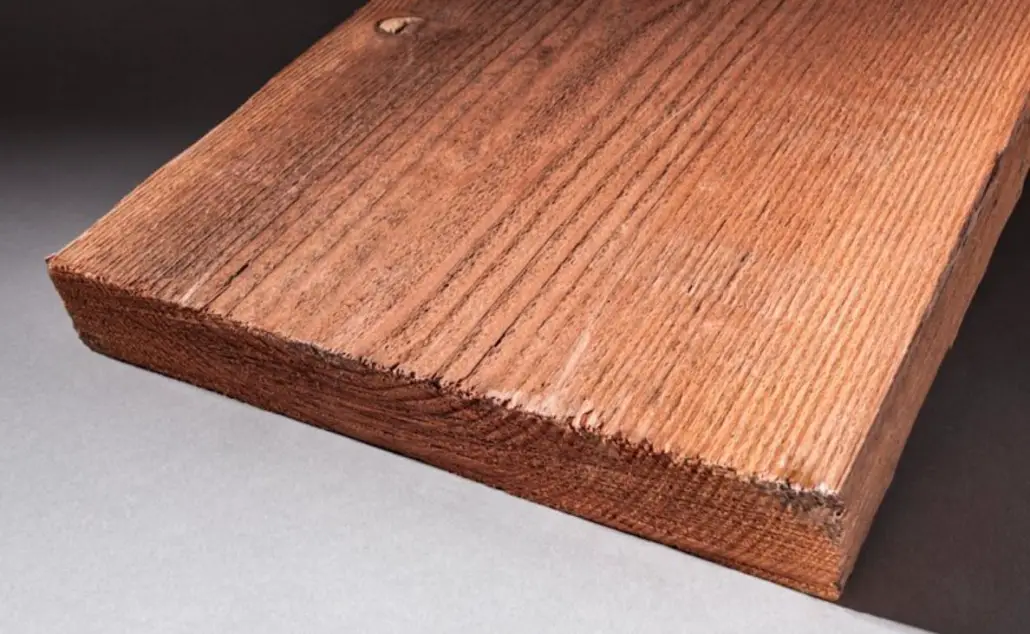
You may have seen redwood barstools without even realizing the type of tree this aesthetic wood comes from.
Redwood is also used to make veneers, wood edging and musical instruments.
Redwood is one of the more expensive softwoods out there because of its beautiful red tinge and natural woodgrain.
Cedar
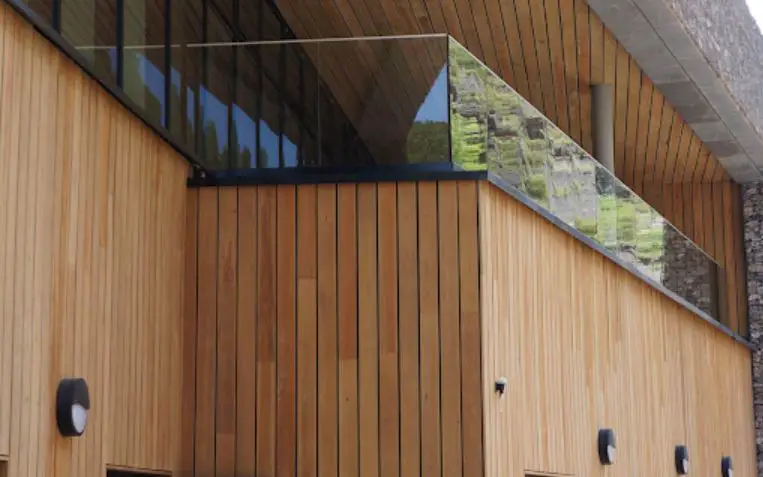
Cedar is one of those woods that is not only light and flexible, but also visually appealing.
It’s a softwood that is used for home fences, decks, and has recently become popular for DIY home chests too.
What Are The Common Uses Of Softwood?
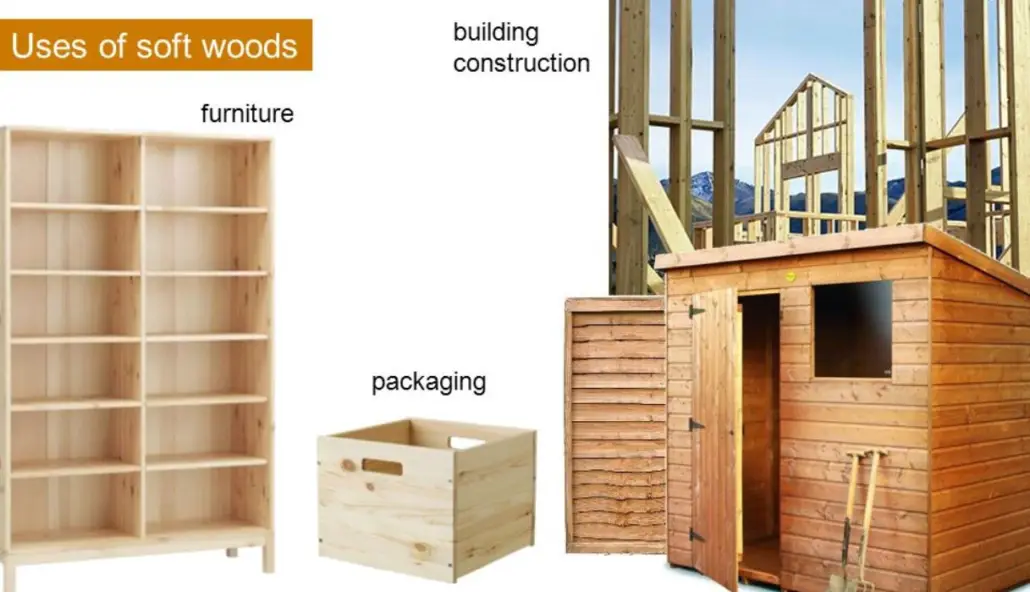
Softwood has many beneficial uses because of its flexibility and manageable light weight.
Although there are countless uses for softwood, I will mention some of the common uses to give you an idea of how it can be distinguished from hardwood types.
Moldings
Softwood is easier to shape than hardwood, making it the perfect material for cornices, dado rails, light shields and skirtings.
These are not only easy to cut to size, but are manufactured to resemble a whole range of different shape patterns for an aesthetic boost to any room.
Veneers
A veneer is a thin sheet of wood grain that’s been shaved off and stuck onto a cheaper sheet of wood to make it look like solid wood.
For example, a veneer of cedar may be attached to a sheet of chipboard (a very cheap man made wood type) making the entire sheet look like solid cedar wood.
Joinery
Because it can be molded, softwood (especially pine) is used to make joints and dowels to assemble DIY wood based furniture such as bookshelves, cabinets and desks.
Decoration
Many softwood types are aesthetically pleasing.
Softwoods such as cedar and redwood are great for making decorative fences, barstools, bar surfaces and wood carvings.
Construction Beams
Pine is often used to make beams for construction.
These beams hold up ceilings and act as a simple weight bearing structure to give shape to a house, cabin or community building.
The Pros & Cons Of Softwood Over Hardwood
There are some ways in which softwood is superior to hardwood, and some ways in which it is not. I’ll show you some of the pros and cons of softwood so that you can better select it for the purposes it was meant for.
Pros
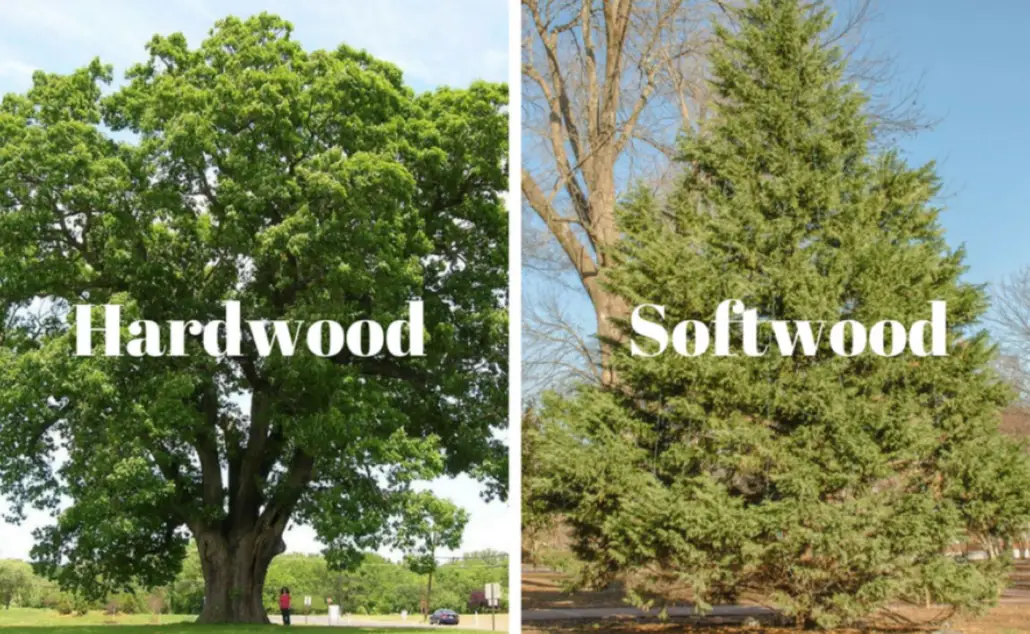
Easy to Manage
Softwood is generally light, making it easier to work with while building or crafting.
Carving softwood is also a lot easier because it is less dense than hardwood.
Although hardwoods are used for purposes where weather resistance is a must, it’s a heavier wood to work with, whereas softwood is easy to carry, position and install.
Cheaper and More Accessible
Since softwood trees grow quicker and take less time to dry out, it is cheaper wood that’s more accessible.
Finding hardwood can be tricky, and if you do find enough of the hardwood you need, you will often pay a heftier price for it.
Flexible and Versatile
Molding softwood into the object you need is much easier and quicker to do than hardwood.
The low density of softwood makes it a more versatile wood to work with.
Cons
Not Weather Resistant
Most softwood types are not weather resistant. They usually absorb water and also break easily when confronted with strong winds.
Not the Ideal Firewood
For starting a fire softwood is great.
But if you want to keep your fire going without having to pile on wood every 10 minutes, it’s better to go for a hardwood, as these woods will take longer to burn up, keeping your fire well maintained for longer.
Fire Hazard
Because softwood burns so quickly, it is a fire risk in buildings that may be exposed to lightning or fire risk situations.
Final Thoughts
I love exploring the various characteristics of hardwood and softwood. Each one has its place in our lives, and if we use the correct one for the correct job, wood will always serve us well.
Every tree has its own unique woodgrain, density and color. We have a plethora of great woods to choose from whether we’re decorating our homes, building new ones or creating furniture.
Now that you know so much more about softwood and hardwood, I hope you can appreciate this highly versatile material as much as I do.


